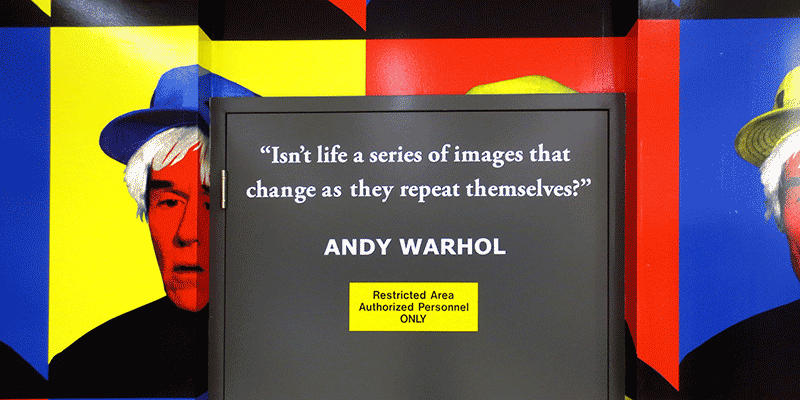
One of the primary objectives of The Remington Group’s Downtown Markham community was to engage residents and visitors with thought-provoking and accessible art at every turn. Inside and out, the Remington Contemporary Art Gallery (RCAG), which will span across all 243 acres of Downtown Markham at full build out, has even been integrated into the walls and pillars of the gallery’s underground parking garage. RCAG’s Underground Art experience features a myriad of eye-catching images of street art originally photographed by renowned artist Hank O’Neal. The photos were selected from O’Neal’s XCIA Street Art series, a tongue-in-cheek title referring to the artist’s former career as a Central Intelligence Agency operative, and according to O’Neal, the spirit of art lies outside the gallery walls. For O’Neal, street art represents “the people’s museum,” and challenges concepts of both aesthetics and social systems.
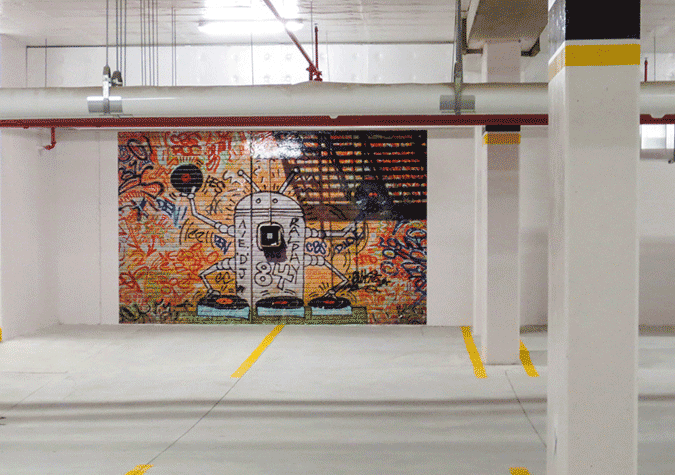
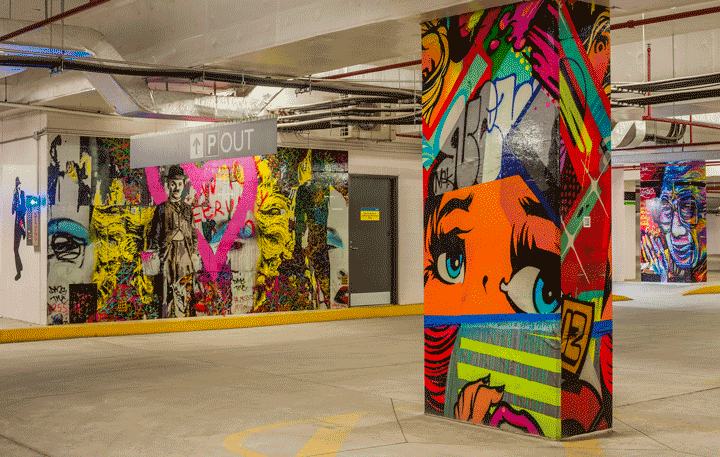
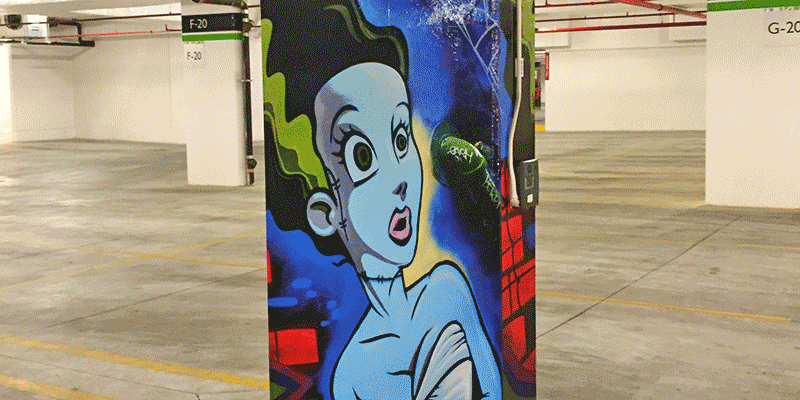
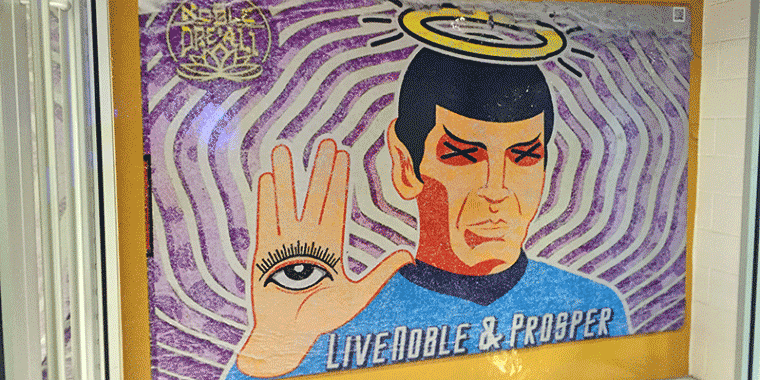
Also included in the RCAG’s impressive list of installations is O’Neal’s ode to Pop Art legend Andy Warhol. Since 2015, the second floor of the gallery, located at The Origin (169-179 Enterprise Blvd, Markham), has been home to a permanent installation of forty-two large prints that blanket the walls with a repeating grid of Andy Warhol’s portrait. O’Neal, who photographed Warhol in 1985, chose this meta presentation of the artist based on the iconic style of Warhol himself, using repetition and distortion of a famous figure’s likeness to explore the purpose of portraiture. As a mainstay of the Pop Art movement, Warhol focused a great deal of attention on the cultural currency of fame, and his fame eventually surpassed the breadth of his own work. Recognizing the phenomenon of the artist as a larger than life persona, O’Neal opted to present his images of Warhol as an irreverent nod to the ultra-recognizable artist, juxtaposing the flat affect as seen in the photos with playfully oversaturated primary colours and skewed composition through multiple exposures.
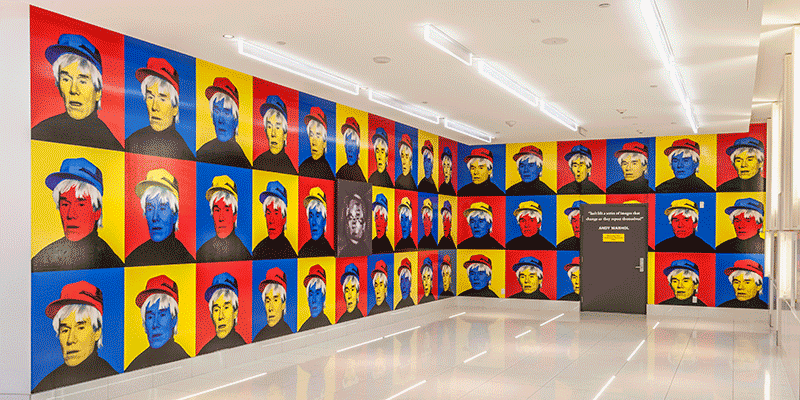
O’Neal continues to experiment and investigate the world through art making and observation. Arts Help writer Laura Thipphawong recently sat down for a virtual meeting with Hank O’Neal to discuss his photographic projects on display at the RCAG.
How did you become involved with the Downtown Markham project?
I became involved with the Downtown Markham project when the curator for the project, Shelly Shier, got in touch and asked to use a couple of my pictures in various parts of the space. Back in 1981, I took a series of pictures of street art of a Canadian artist, Richard Hambleton, who was working in New York City at the time. One of the pictures that I took, sort of had a life of its own, as it was a shadow figure that he was putting all over New York City at that time. His pal, Jean-Michel Basquiat, went out with him one day, and on one of Richard's Shadow pictures, he drew a skull face. That picture is now on coats, skateboards, t-shirts, coffee mugs and God knows what. So, this photo I took of the Shadow became a 40 by 50-foot mural in downtown Markham. It was put up around 2013 and stayed up for a few years. An enormous wheat-paste mural of a picture that Shelley really liked, was my first project in Downtown Markham.
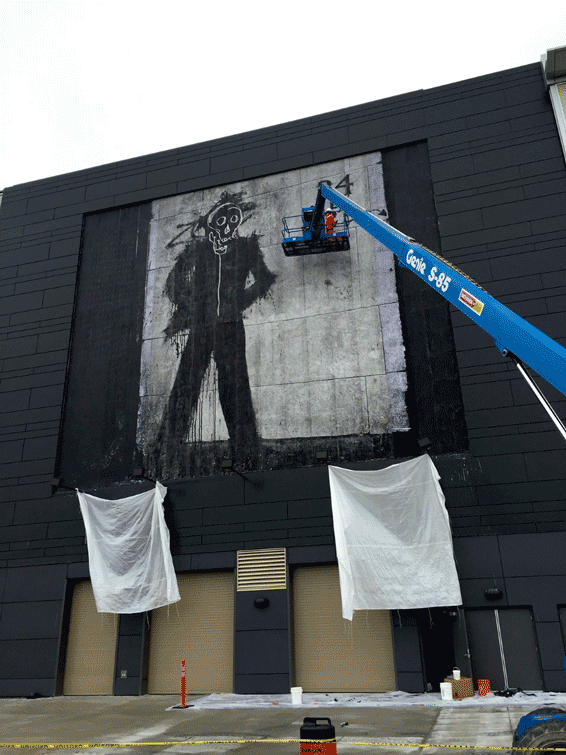
The second project was at the gallery and it was a room that was based on pictures I took of Andy Warhol in the mid 80s. I turned the tables on Andy. He would make all these duplicates of famous people’s pictures, change the colors and do funny effects. Well, I took portraits of him, and then changed all the colors on him. Shelley thought those pictures would be nice in a room at the Markham gallery.
The third project, later on, involves something that I've done over the years, beginning in the mid 70s: taking pictures of street art. I've been very interested in street art for a long time and right now my street-art photo archive is at approximately 130,000 images. Many of those images were used in the parking garage at the Markham gallery. They were put on pillars and I think the idea was to use them as way-finders. I guess people remember where they parked their car when they go to the movies or wherever they were going, by remembering which image they parked close to. Those were the three projects that utilized my photographs.
You’ve definitely added a lot to the space, including a lot of work that bears the context of modern art history. How would you describe the intention of those projects in the RCAG from the creator’s point of view? What do those installations mean to you?
Well, it doesn't necessarily have a metaphysical meaning, especially with the Andy Warhol. It was just for fun. I should give you the whole background: in the mid-80s, a good friend of mine was a man named Allen Ginsberg. Allen called one day and said, “Hey, some people are making a film about me. Andy Warhol is going to talk about me today, and they're filming it. Would you please come down to his place and take photographs?” And so, I said, “Sure, Allen, sure. By all means.” So, I went down and took a whole bunch of pictures. Andy Warhol was a brilliant guy, as he created wonderful work that reshaped the art world significantly in a variety of ways. Although, he was sort of a picklepuss. I have all these pictures on a row of contact sheets and there's no smile, there's no anything. Cheer up, Andy! I remember that day so clearly. It was in the second factory, the one that was up on 38th Street or 39th Street, and he came in wearing his fright wig and a black turtleneck, and he just sat there. Jerry Aronson, who was the director of the film, would ask him questions and his answer would be [flatly] blah blah, blah. I’ve been involved in a lot of documentaries and Andy was so expressionless, as opposed to somebody like Meryl Streep or one of the best, Helen Mirren; my goodness, what an animated and wonderful woman she is. She would give you so much. You'd ask her a question about anything and she'd be so animated about it. Anyway, Andy was not very animated.
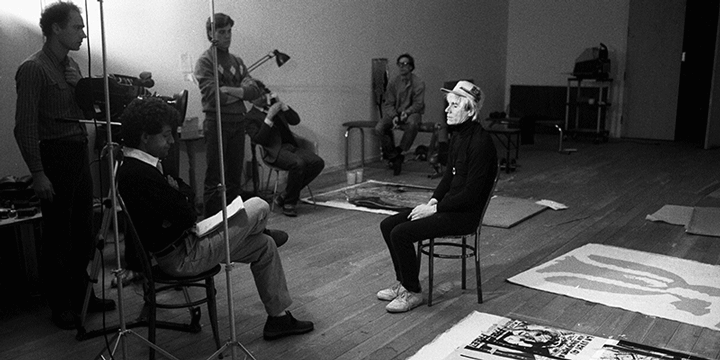
My favorite version of that picture is one that's a double exposure. I took one, printed it, then turned it upside down and printed it again, so we have four eyes, and he's up and down. It's supposed to be light-hearted, fun, cheerful, optimistic and not too serious. Because he wasn't. I mean, he was really smart commercially, but I think that he was also laughing a great deal in secret. I just wanted to make something cheerful. I purposely took cheerful primary colors. The first version of that, golly, I would have made it in the early 90s. I actually hand-colored it because we didn't have options like Photoshop, so I hand-painted 100 small photographs and put them all together. It was just a fun project. I made it as Pop-Artsy as I could, because that's what he was. He never saw it, of course, because he died within two years, the poor guy. This too, didn’t have any significant spiritual meaning. It was simply a fun project.
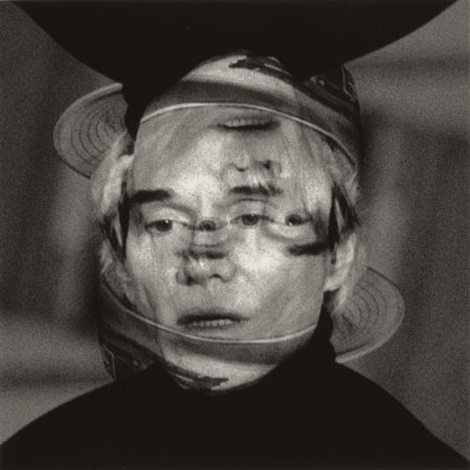
It does sound like a memorable experience, and you really turned it into something tangible. Can you recall any other times when you were able to capture something from an artist that you found to be special or could possibly use for a series or installation, but never did?
I just found a negative of a picture that I took in about 1978. I owned a recording studio and one of our clients was the Whitney Museum. Now, they've got a couple of pictures lying around, however, the work we did for the Whitney didn't have anything to do with their photos. It had to do with a series of concerts that they put on - serious concerts where we would take the top floor of the building and turn it into a specific set, depending on what the performance was. It varied from string quartets, small orchestras, vocalist, classical or a composer’s showcase. We were charged with recording them. I remember one day that they were running behind schedule, and they didn't have enough people to help clear the space. They didn't want to leave certain large paintings on the wall where people were going to be lounging around or where a child could stick their finger through a picture. So, they were trying to take these pictures off the wall and store them, so that they could clear out the three big rooms that we use for the performances. I saw them sort of scrambling and I said, “Listen, I've got my crew here, we don't have anything else to do, we can help you move the pictures.” They replied, “Yeah, if you would help, that would be really terrific because we're way behind schedule.” He asks me to get on one end and help move an enormous Tom Wesselmann. Okay. I mean, by enormous it was 20 feet long, at least; it was a big one, and he loved to paint naked girls with big breasts. That was one of his things. This was one of those paintings. The workman and I took this over and put it in the room, facing out. The next picture that we had to deal with was a Frank Stella, a very large irregularly shaped canvas. The workman and myself got on either end of the picture, set it down and leaned it against the Wesselmann. An enormous breast was coming out of the curve of the Stella painting. I took a picture of the two paintings together and I printed it up and sent a copy of it to the director of the Whitney. This was just to show him that people were having fun in his museum. As far as other artists who I find inspiring go, I have an enormous Stuart Davis silk screen. By enormous, I mean it's about five feet high by four feet wide, and I would be much more inclined to really like Stuart Davis over the Pop artist, but that's just my taste. There were many reasons to like Stuart Davis, but not least of which was that he was a music person.
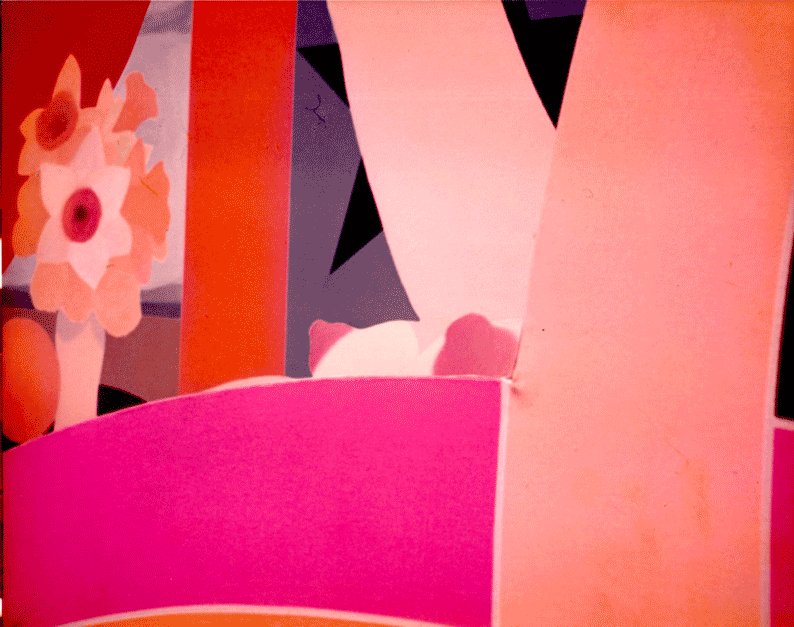
That actually leads into my next question. You’re a musician and you’ve done some special photography projects involving jazz history. In fact, as a writer, musician, and artist, your range of creativity is notably diverse. Do your different areas of interest afford you a lot of crossover inspiration?
Well, you see, so many of the people that I first met when I came to New York City were seriously interested in art. That includes many musicians who were active in the 30s, 40s, and 50s who were seriously interested in art. My friend Hayden Carruth, who’s a poet, said the two greatest artists of the 20th century are William Butler Yeats, and Charles Ellsworth Russell, who was a clarinet player. So many of the painters and writers I know were serious jazz fans as well. Stuart Davis named his son, who's still a pal, after George Wetting and Earl Hines. If you look at a Jackson Pollock , that's like a jazz improvisation on a canvas, on the floor. Just like John Coltrane is an improvisation on the saxophone. There's no difference. I use this as an analogy because it’s the same for street art. When I go out and photograph street art, somebody puts something on a wall, then every few days, different artists’ come to add something else. That's jazz improvisation on a wall. It is this aspect of street art that interests me the most. I don't want to just take a picture of somebody's mural. I want to see what somebody does to it and how another person may add or subtract to it. That's interested me since the mid 70s. Now, there was no improvisational nature in the Andy Warhol room, not at all. However, on many of the pillars in the garage, there will be half a dozen different people who have worked on one thing, and it all works together.
You’re clearly passionate about the creation of public art. I’m interested in your views on street art, graffiti and murals, and what it means to you. Why do you find it so appealing?
I mean, I honestly think that some of the stuff that goes on in the street gets a whole lot more interesting than what goes on in galleries. Some of these young street artists are really good, and they're thinking about things far beyond what some might see as vandalism, and that doesn't interest me very much. Even though I'm older than dirt, I'm still working every day on one thing or another. At the moment, I like to go out and find street art here in New York City to photograph because we're unable to travel around a whole lot right now. My rule is to devote two afternoons a week, usually on Saturday and Sunday. There are so many wonderful people who are making art out there. Both young and old. There's a guy I know, who's about 87 and he's still putting stuff up. I think that's remarkable, encouraging and wonderful. It was Sunday, I went out to Brooklyn, to Broadway in Myrtle; do you remember an artist named Mos Def? He had a song that mentions Broadway and Myrtle, so I went there and I took some pictures of the art around the area. I have no idea who some of the artists are, but they were absolutely wonderful. Their art showcased vitality, spirit and an energy level. It's not like piling a bunch of bricks in a corner or leaning a ladder up against the wall. So often it is serious, important social commentary about circumstances that are meaningful that people should understand and study more deeply. There was a mural that I saw on Sunday, that was possibly longer than 40 feet. It was about Black Lives Matter, with beautiful portraits of George Floyd, Breonna Taylor, and about half a dozen other people all lined up down Broadway underneath the elevated train. To me, a statement like that, in that neighborhood, in that circumstance, and so well done, and I mean, it was really well done - that's important. Although It's hard to put something like that in a gallery, I think it's important work that should be seen more often.
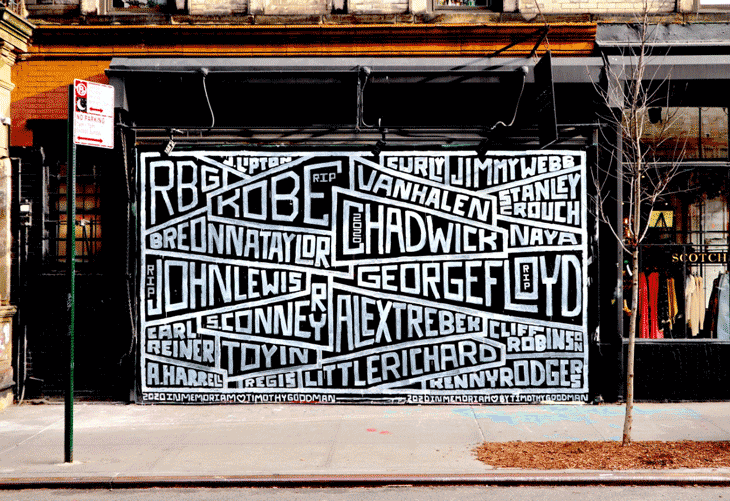
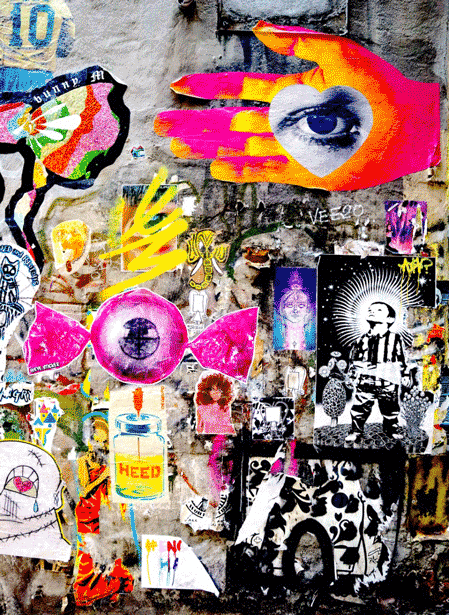
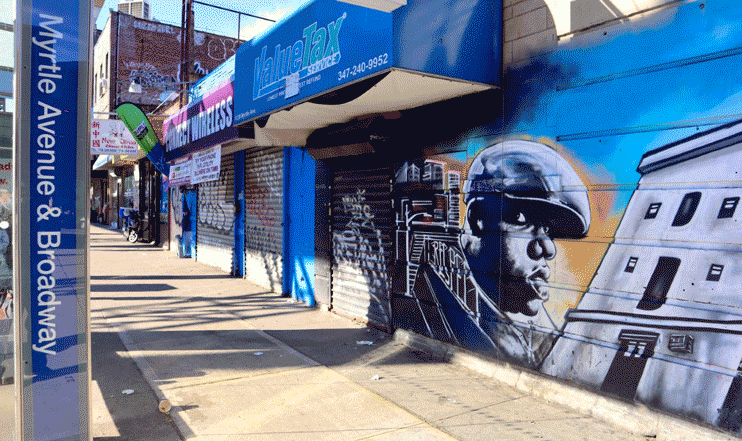
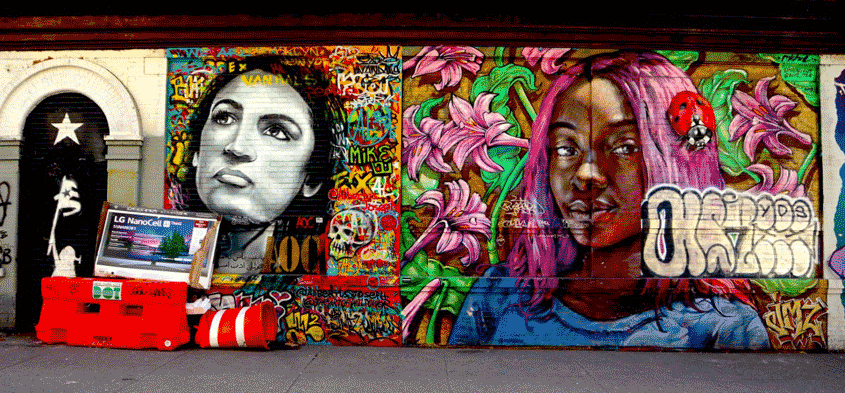
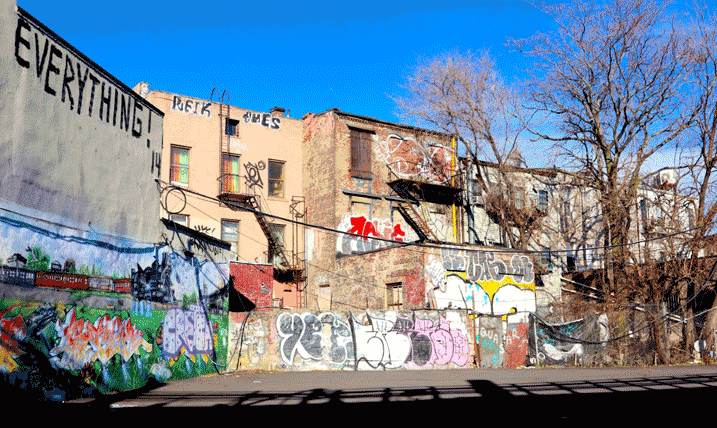
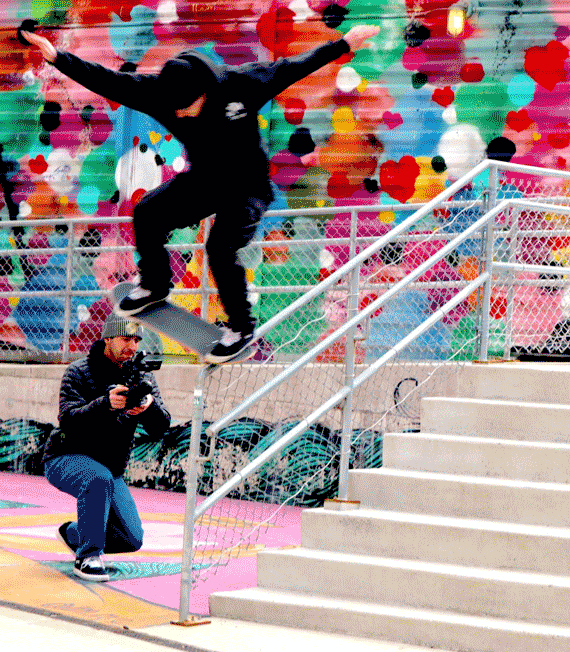
The street art installation at the RCAG must be particularly meaningful to you. Do you feel like the essence of street art that you love is represented in that project?
I like it when things interact, just like how the Remington gallery was put together. There is so much interaction. It's not just, hey, here's a picture over here and a statue over there. All of it makes sense, works together and creates a unified whole. I feel fortunate to have been part of this. To have all of those young street artists in the garage creating art for everyone to see, the way it was meant to be, that’s just great. As far as my own work, you know, it’s not that serious, it’s just for fun. If it doesn’t make you happy and smile, what’s the point?
Hank O'Neal
Hank O’Neal is a photographer, musician, and writer based in New York and raised in Texas. His diverse career began with a position with the Central Intelligence Agency and concurrent service in the U.S. army, where he rose to the ranks of Captain during the period of 1962-1967. Having formed a love of photography since childhood, when his father would print photographs in the kitchen darkroom, O’Neal continued to nurture his passion and exhibited his work for the first time at the Open Mind Gallery in the Soho district of New York City. It was there in New York that O’Neal formed many career-changing friendships, including a nearly twenty-year working relationship with photographer Berenice Abbott, who convinced him of the intellectual merits involved in planning a project, rather than working aimlessly. Since then, O’Neal has been actively searching for the right images with which to construct his series, has published several photography books along the way, and has produced exhibitions of his work on a continuous basis, including a large retrospective at the Witkin Gallery in New York in 1999.
In conjunction with this work as a photographer, O’Neal has also made a career for himself in music, forming two record companies, Chiaroscuro Records and Hammond Music Enterprises. O’Neal produced hundreds of jazz records and festivals with Shelley M. Shier through their production company, HOSS, Inc., and has devoted his writing skills, photography projects, and humanitarian efforts to numerous jazz and music related endeavours. O’Neal continues to work, most recently on his series of street art photographs, and is continuously sourcing inspiration for his various projects.
